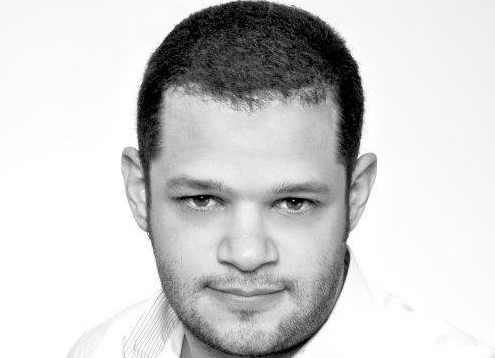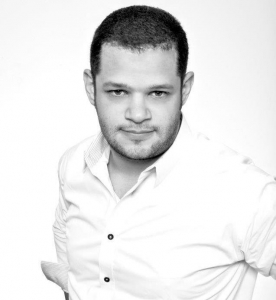- What is your view of branding and design in the healthcare space?
Branding and design in the healthcare space are certainly moving in a better direction. Nowadays, people have an increasing appreciation for designs that are elegant and engaging. We see that all over the place: in tech brands like Apple and Google; in apparel brands like Nike; and in service brands like Airbnb, Uber and even Amazon. Today, the commercial landscape is a competition for who is going to launch the simplest and most beautifully designed brand identity. Just look at the new designs for Verizon, Casper, Hims/Hers, Sonos, Netflix, etc. These are brands that really embody the experience customers will receive in each interaction, and they bring that experience to life with beautiful design. Because we are surrounded by those brands, people have come to expect that type of brand experience from all the brands they interact with, regardless of what the product is. Some healthcare brands have started to evolve their brand experiences to satisfy this expectation. We have seen some improvement in healthcare, for the most part at the corporate level; at the product level, however, there is still a lot more to be done.
As branding in healthcare catches up, more pharma clients see value in this evolution. Lately, we have been focusing on recruiting more strategy and design talent from top-tier consumer branding agencies in order to help elevate the design culture to the level that the industry is demanding.
- How has COVID-19 changed the way we interact with brands?
With the onset of COVID-19, people are now interacting with brands in a more focused way. When people spend most of their time at home, they consume brand experiences from the same medium: a TV screen, a laptop or a mobile device. And all the brands they see are competing for attention using the same screen and the same set of speakers. So now, brands need to create more impact in order to achieve the same amount of stopping power they had before.
The concept of multimedia is evolving to a single medium: the screen. Brands have to adapt and make the most of it. In healthcare, this impacts everything – from the way the salesforce details a brand to the way the scientific community attends medical conventions. This evolution was already happening slowly, but COVID-19 has accelerated it, forcing us to think differently about the way we promote. In marketing you often hear the phrase ”Times have changed” when making a point about the need to embrace emerging technology or a new approach, but never before that phrase was so relevant. This is it, this is the new era. All of a sudden, a virtual-meeting background that you see in a 30-minute meeting can have more impact than an out-of-home billboard that you see for 10 seconds on your way to the office – the little things we took for granted before are now just as important as anything else.
- Are you seeing branding innovations that were once only done in the consumer marketing space, making their way to pharma?
Absolutely! Audio and motion identities – just to name a few.
The recent shift to “everything virtual” demands creative ideas to enhance brand experiences on the screen. Speaker decks in medical meetings, for example, can use engaging features such as sound and animations to captivate the audience and break the monotonous rhythm of a clinical presentation. Motion assets can also help add meaning in a way that static images can’t. The manner and speed in which a graphic moves on the screen can be very effective in communicating efficacy or efficiency.
Audio-enabled devices have become more standard and an essential part of everybody’s personal and working life. Voice-activated technology are more and more common on people’s homes and with that level of popularity we are experiencing the birth of a completely new form of brand interaction. The sound that Siri makes when it receives a voice command is as recognizable as the Siri name itself. Interestingly this form of branding is a lot more persistent, in the sense that you can’t ignore it. You might miss the logo at the end of a TV spot if you are distracted, but if it had a sound you would hear it. If that sound has being designed to be memorable, it can really enhance the recall of the brand.
A sound can also connect with people emotionally a lot faster than a picture can. Because of this, a sound is very effective in persuading people to get into the right mindset at the time of interacting with a brand. We all know the dramatic Netflix sound and the thrilling feeling that it conveys at the beginning of a show. We recognize a sense of clarity in the T-Mobile sound, or the sense of pride in the Farmers jingle. This multisensory approach to branding is starting to be adopted by pharma to convey concepts of empathy or advancement or accuracy. The incremental TV presence of pharma brands is also creating an opportunity to use sounds as a way to enhance brand recall. Brands with difficult-to-pronounce names can benefit from audio name mnemonics to help establish proper pronunciation at launch.
Again, pharma brands are competing for attention against prominent consumer brands, so we have to compete with the same resources.
There are some other innovations, like the use of more engaging data visualization to make the clinical data a memorable branding asset, responsive branding elements for digital use, dynamic typography using variable fonts, etc.
- When it comes to branding, how do the considerations for a pharmaceutical brand differ from those for a consumer brand? And how are they the same?
More than ever, all brands – not just consumer brands – have to create excitement in order to break away from the noise. That said, you are working with two completely different mindsets. It is more difficult to create excitement with a healthcare brand because people consume them out of necessity and not out of desire. So the excitement that a healthcare brand can create is a different type of excitement. It is about a revitalizing sense of renewal in most cases. Sometimes, it is about advancements in science, and sometimes it is about the opportunity to maintain your well-being for just a little bit longer. Those are the most difficult ones.
Given that all brands are competing for attention on the same platforms, healthcare brands must position themselves as sources of hope, versus as a reminder of a problem. So, in that way, they’re more similar than you’d think.
Today, healthcare marketers are increasingly savvy about branding best practices and are willing to invest the effort and resources to elevate brand experience to a competitive level of quality that is parallel with that of general consumer brands.
Source: Q&A with FCB Health Network’s Fernando Fernandez – PharmaLive














